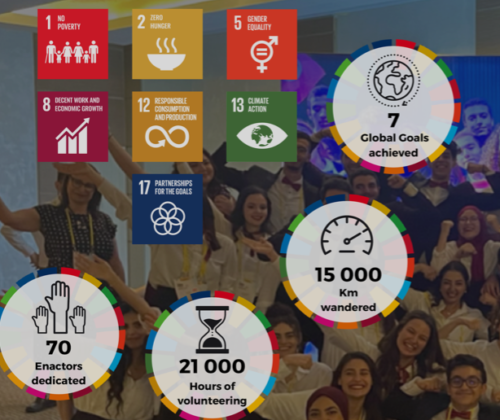 Qualys’ annual security conference returned to a live-only event this week at the Venetian Hotel in Las Vegas, and the keynote addresses started things off on a very practical note… about selling coconuts, toasters, and carbon monoxide detectors. The first two keynotes featured speeches from both Shark Tank celebrity businessman and CEO of Cyderes, Robert Herjavec, and Qualys’ President and CEO, Sumedh Thakar. Both spoke around the similar theme of qualifying and quantifying digital cyber risks.
Qualys’ annual security conference returned to a live-only event this week at the Venetian Hotel in Las Vegas, and the keynote addresses started things off on a very practical note… about selling coconuts, toasters, and carbon monoxide detectors. The first two keynotes featured speeches from both Shark Tank celebrity businessman and CEO of Cyderes, Robert Herjavec, and Qualys’ President and CEO, Sumedh Thakar. Both spoke around the similar theme of qualifying and quantifying digital cyber risks.
I am doing near-time blogging of their show, and this was the first of a series of posts.
The second post was a recap of the first day’s events, and included highlights from some of their customers and product team as they took a deeper dive into TotalCloud.
The third post profiled the special launch of the Qualys Threat Research Unit, showing some of its research and how it compiles threat intel and works with various industry bodies to share this data.
The next post highlights some of Qualys’ customers who came to the event to tell some of their stories about how their companies have benefitted from their products.
My final post recaps the second day of the conference sessions and some of the more interesting aspects of various Qualys products.
 With the reinstatement of previously
With the reinstatement of previously  AI is a double-edged sword. It has enabled the creation of software tools that have helped to automate tasks such as prediction, information retrieval, and media synthesis, which have been used to improve various cyber defensive measures. However, AI has also been used by attackers to improve their malicious campaigns. For example, AI can be used to poison ML models and thus target their datasets and steal login credentials (think keylogging, for example). I recently spent some time at a newly created
AI is a double-edged sword. It has enabled the creation of software tools that have helped to automate tasks such as prediction, information retrieval, and media synthesis, which have been used to improve various cyber defensive measures. However, AI has also been used by attackers to improve their malicious campaigns. For example, AI can be used to poison ML models and thus target their datasets and steal login credentials (think keylogging, for example). I recently spent some time at a newly created  Qualys’ annual security conference returned to a live-only event this week at the Venetian Hotel in Las Vegas, and the keynote addresses started things off on a very practical note… about selling coconuts, toasters, and carbon monoxide detectors. The first two keynotes featured speeches from both Shark Tank celebrity businessman and CEO of Cyderes, Robert Herjavec, and Qualys’ President and CEO, Sumedh Thakar. Both spoke around the similar theme of qualifying and quantifying digital cyber risks.
Qualys’ annual security conference returned to a live-only event this week at the Venetian Hotel in Las Vegas, and the keynote addresses started things off on a very practical note… about selling coconuts, toasters, and carbon monoxide detectors. The first two keynotes featured speeches from both Shark Tank celebrity businessman and CEO of Cyderes, Robert Herjavec, and Qualys’ President and CEO, Sumedh Thakar. Both spoke around the similar theme of qualifying and quantifying digital cyber risks. One of the fun volunteer jobs that I have is talking to American Red Cross volunteers about the wonderful work they do to help others in need. I recently w
One of the fun volunteer jobs that I have is talking to American Red Cross volunteers about the wonderful work they do to help others in need. I recently w Once again I had an opportunity to judge several collegiate entrepreneurial efforts as part of the
Once again I had an opportunity to judge several collegiate entrepreneurial efforts as part of the